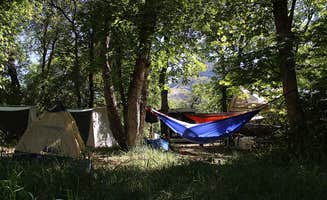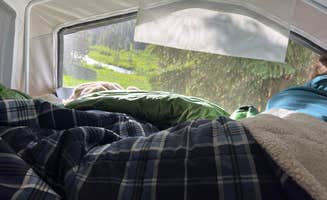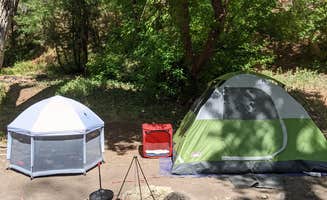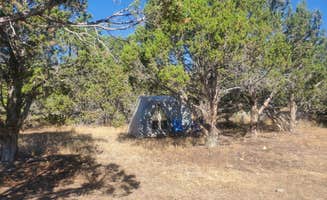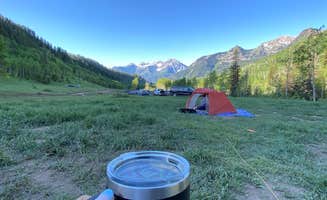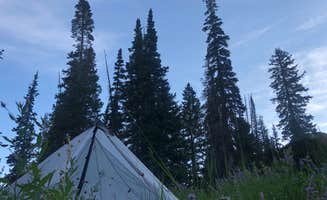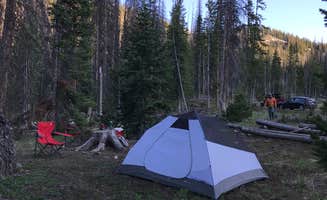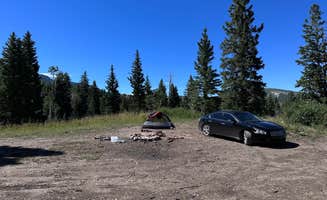Dispersed camping areas near Elk Ridge, Utah range in elevation from 5,000 to over 9,000 feet, creating distinct camping zones with varied seasonal access. The region receives approximately 16 inches of precipitation annually, with most falling as snow in winter months. Many roads to primitive campsites require vehicles with at least 8-10 inches of ground clearance, particularly on forest service roads after spring runoff.
What to do
Fishing opportunities: Several camping locations offer fishing access within a short distance. At Camp Maple Dell, campers mention seeing "deer walk through our camp daily" while having easy access to fishing spots about "15-20 minutes from Payson City."
Hiking to hot springs: The camping areas near Diamond Fork provide access to natural hot springs. From Dry Canyon camping area, you're "only about a mile from the fifth water parking lot and a few miles hike from the hot pots," according to one reviewer who adds there's "really good fishing in both the fifth water river and Diamond Fork."
Paddleboarding: Mountain lakes near camping areas provide calm water recreation options. At Anderson Park, campers report the area is "great for Paddleboarding and fishing," while another visitor to Silver Lake noted "we spent our afternoons paddleboarding on Silver Lake Reservoir."
What campers like
Riverside camping: Many campers value sites positioned near moving water. At Dry Canyon, a reviewer notes it offers "beautiful riverfront camping" and "the sites are spacious and private and right by the river." Another mentions you're "a perfect distance from the river so you can listen to it as you fall asleep, but you don't have to worry about floating away."
Alpine lakes: Higher elevation tent campsites near Elk Ridge offer scenic lake views. At Silver Lake Backcountry, a camper shares that "the views make the drive there worth it" and "the fall colors during the day and the stars during the night were spectacular!"
Group facilities: Some established campgrounds accommodate larger groups. Camp Maple Dell offers sites where "multiple tents fit per site. We had 6 tents, and had room for several more." The area includes a "covered pavilion with three picnic tables connected end to end" and "ample area for kitchen set up."
What you should know
Water access varies: Most dispersed campsites require visitors to bring their own water supply. Dry Canyon has "one pit toilet but for this small camp area, it does the trick" but is for "self-contained campers, van campers, or tent campers who don't need water."
Road conditions: Many camping access roads deteriorate after weather events. Hobble Right Fork Dispersed has a "dirt road in was pretty rough, but manageable. Make sure you have a spare tire on you just in case." Another visitor notes "you will have to drive a dirt road that is less than fair at times. You won't need high clearance but a good suspension or airing down will help."
Campfire regulations: Fire restrictions change seasonally. One camper at Hobble Right Fork noted "there was a burn ban when I was there 10/10/20, but there were fire pits at each site," indicating you should check current restrictions before relying on cooking over a fire.
Tips for camping with families
Group-friendly sites: Look for locations with pavilions and infrastructure. At Anderson Park, you'll find a "large covered lighted pavilion with three rows of picnic tables" and a "large grassy field" that "accommodates small or large groups."
Wildlife viewing: Many camping areas offer wildlife spotting opportunities. In the Dry Canyon area, one camper reports "I have seen elk, deer, moose, and black bear in this area so bring a camera and don't leave food in your tent."
Easy access camping: For families wanting shorter hikes to camping spots, Red Pine Lake offers beautiful tent camping within a reasonable hike. While the "last mile or so is moderately difficult," the trail is "well kept and the lake itself is stunning. Lots of streams everywhere too which I loved."
Tips from RVers
Length limitations: Longer RVs face significant challenges on forest roads. At Sulphur Campground, a camper with a "25ft hybrid trailer" noted that "the camp spots are narrow, the road in/out is narrow. Our 25ft trailer seemed to be a max length, but there were some 32 ft goosenecks and motor homes there."
Water filling options: RVers at established campgrounds can use creative solutions for water. At Wasatch National Forest Sulphur Campground, a reviewer mentioned "great tasting water, we used a 5 gallon bucket and a water transfer pump from Harbor Freight to fill up our fresh tank."
Bathroom facilities: RVers should note varying toilet facilities. Cottonwood Campground has "one pit toilet that did have toilet paper," while other areas like Sulphur Campground feature "the cleanest restrooms" according to visitors.


